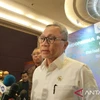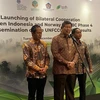Bangkok (VNA) - Thailand’s exports to member countries of the Association of Southeast Asian Nations (ASEAN) in the first four months of 2022 reached 24 billion USD, up 17 percent year on year.
According to the Trade Negotiations Department, ASEAN is Thailand’s largest export market, accounting for 24.7 percent of the country’s total exports.
The first four months saw “satisfactory growth”, said the department, with exports up 60 percent to Singapore; 34 percent to Indonesia; 24 percent to Myanmar; 11 percent to Malaysia; 8 percent to Laos; 7 percent to Cambodia; and 0.4 percent to Vietnam.
Growth was driven by exports of sugar (up 140 percent), wheat and instant foods (12 percent), animal and vegetable fat/oil (81 percent), animal feed (21 percent) and tapioca (72 percent). Agricultural products accounted for 16 percent of all exports to ASEAN.
Industrial products, which made up 72 percent of Thailand’s exports to ASEAN, also rose, including vehicles and auto parts (up 1.4 percent), plastic pellets and chemicals (14 percent), electronic circuits (27 percent), machinery and parts (21 percent) and electric appliances and parts (8 percent).
The department expects exports to the regional nations will grow further in the second half of 2022 following relaxation of COVID-19 restrictions and export bans of key foods such as chicken by other ASEAN countries./.























